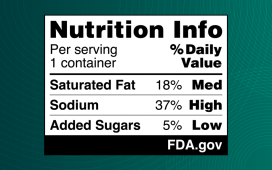The 170th American Psychiatric Association Annual Meeting
The annual meeting of the American Psychiatric Association was held from May 5 to 9 in New York City and attracted approximately 10,000 participants from around the world, including clinicians, academicians, allied health professionals, and others interested in psychiatry. The conference highlighted recent advances in the prevention, detection, and treatment of psychiatric conditions.
In one study, Michael Van Ameringen, M.D., of McMaster University in Hamilton, Canada, and colleagues found that individuals who played Pokémon Go tended to have increases in physical activity and social behavior, as well as an improved sense of well-being.
“Adolescents and young adults who suffer from anxiety and depressive disorders are very difficult to engage in any form of psychological treatment. Games have been used to engage this age group in online treatment programs and are being studied as mental health treatments,” Van Ameringen said. “This type of gaming technology should be harnessed as a tool for engagement in a population which is historically difficult to engage in behavioral treatment strategies.”
In another study, Krista F. Huybrechts, Ph.D., of Brigham and Women’s Hospital and Harvard Medical School in Boston, and colleagues evaluated the drug-specific risk of gestational diabetes in a cohort of prevalent users of atypical antipsychotics at the beginning of pregnancy. The authors compared women who continued treatment during pregnancy to those who discontinued.
“Different atypical antipsychotics are known to carry different risks in terms of metabolic side effects in the general population,” Huybrechts noted. “The metabolic safety of these medications during pregnancy is not well understood.”
After accounting for potential confounding variables, the investigators observed a 28 percent increase in the risk of gestational diabetes among women who continued treatment with quetiapine during pregnancy, corresponding to 1.6 extra cases of gestational diabetes for every 100 women treated.
“We observed a 61 percent increase in the risk of gestational diabetes among women who continued treatment with olanzapine, corresponding to 4.4 extra cases of gestational diabetes for every 100 women treated. No increased risk was observed for aripiprazole, ziprasidone, or risperidone,” Huybrechts said. “We would advise women who are treated with these higher-risk medications to talk to their physician about the possibility of potentially switching to a lower-risk medication. Any such treatment decision will involve a trade-off between the benefits of staying on a stable treatment regimen and the potential small increase in the risk of gestational diabetes.”
Paul Nestadt, M.D., of the Johns Hopkins Bloomberg School of Public Health in Baltimore, and colleagues assessed the change in prevalence of opiates in suicide decedents as measured by objective toxicology and autopsy reports.
Of 6,264 suicides in Maryland, the investigators found that 750 (12 percent) were positive for opiates by toxicology. Compared to general suicides, opiate-positive suicides were more likely to be female and white, and more likely to die by overdose (via opiates or other drugs).
“They were more likely to also have cocaine on board, but less likely to be intoxicated on alcohol. Over time (2006 to 2017), the proportion of suicide decedents positive for cocaine decreased by 65 percent, while alcohol remained unchanged. Opiate positivity almost doubled, from 8.8 percent of decedents in 2006 to 17.1 percent in 2017. Adjusting for demographics, this was a 92 percent increase,” Nestadt said. “The increase was even more striking when excluding opiate overdose deaths (as opposed to deaths simply associated with being on opiates, not just using them as a lethal method), demonstrating a 119 percent increase.”
The investigators noted that the trend was greatest in African-American decedents, whose opiate positivity increased by 550 percent.
“Opiates are becoming increasingly entangled with suicidality, and are playing a role in an increasing number of suicides,” Nestadt said. “Providers who are working with patients taking opiates must be at increased vigilance for suicidality and mood disorders. Mental health workers should be aware when their patients are being exposed to opiates and should attempt to minimize opiate use in their practice.”
Copyright © 2018 HealthDay. All rights reserved.







